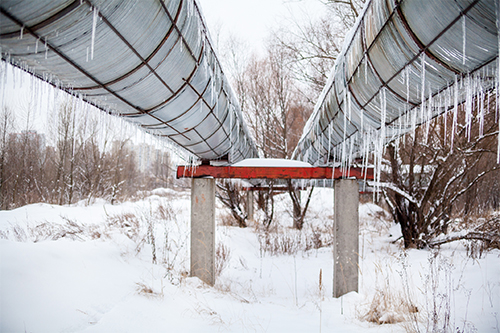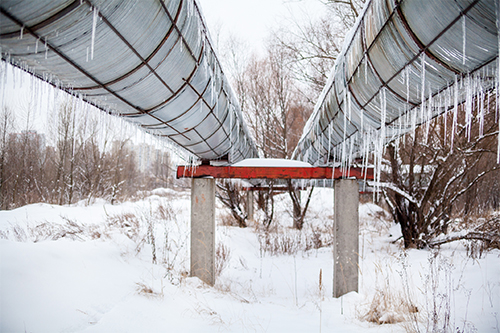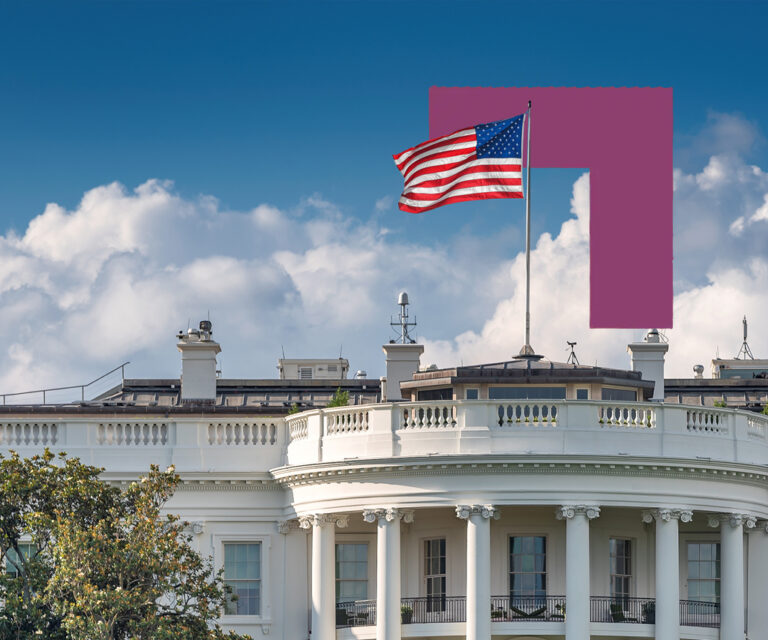-
The impact of the Ukraine crisis for real estate investors
Russia’s incursion into Ukraine began in the early hours of February 24th and has progressed rapidly and violently every day since. After over seven decades of cold war machinations, a hot war has broken out in Eastern Europe. The gravity of the situation for Ukraine’s people and seriousness of the risks to the post-Cold War geopolitical order cannot be overlooked. The geopolitical tremors of Russia’s action and the West’s sanctions are likely to be felt across the world for years to come. But direct implications for institutional real estate portfolios are relatively limited. Rather, the key channels of influence on property markets are likely to be indirect and macroeconomic in nature. These include higher inflation, “risk-off” market sentiment, and accelerated changes in the European energy mix.
One of Europe’s frozen conflicts has suddenly started to run hot. Real estate investors are wise to anticipate incrementally higher inflation, particularly in construction materials and energy costs, while evaluating the relative magnitudes of the upward and downward pressures on the cost of debt.

Russian gas pipeline Ukrainian and Russian properties will clearly feel the most direct effects from the conflict — the former due to the likelihood of physical damage, and the latter driven by economic sanctions. The 2014 annexation of Crimea triggered a steep decline in Ukrainian real estate investment volumes and a more muted softening in Russian volumes (see deck page 6). But these two countries have never really featured as targets for cross-border property investors. According to LaSalle’s Investable Universe estimates (see deck page 5), Ukraine and Russia account for just 0.3% and 2.7% of Europe’s total invested institutional real estate stock by value, respectively.
The more transparent former-communist EU member states, such as Poland and the Czech Republic, are more relevant for real estate investors in 2022. Many pan-European portfolios have exposure to these key Central and Eastern European (CEE) markets, which have boomed as consumer economies and as sites for near-shored services and manufacturing. All of the EU-member CEE countries, including the Baltic states, are also members of NATO, which should shield them from Russia’s territorial ambitions. When shelling is within earshot of the NATO border and refugees pour into CEE, nerves are understandably on edge. However, unlike the days of the Soviet Republic, the likes of the Baltics, Poland, Slovakia, Hungary and Romania are all strong economically and they are protected by a rapidly deployed NATO shield. So, “domino effect” risks are remote.
Although direct impacts on investable property are limited, indirect macro risks from the conflict are substantial. Aggregate trade flows between major developed economies and Russia or Ukraine suggest a very limited drag on growth, but the concentration of exports in certain key commodities will probably drive inflation higher at an unwelcome time. Russia is one of the world’s largest oil producers and a supplier of metals such as nickel, aluminum and palladium. Major natural gas pipelines run to Europe from Russia via Ukraine. The geography of gas infrastructure and the energy mix of various EU states mean that several large EU countries, notably Germany and Italy, are heavily reliant on imports of Russian gas (see chart on page 4). While ample gas storage levels mean that a slowdown or shutoff of gas flows would not create a shortage during this heating season, it would have knock-on effects on supply levels later in the year.
How much could this boost inflation? If the gas and oil price jumps seen in the early days of the invasion are sustained, Capital Economics estimates that this would increase eurozone headline inflation by a percentage point by mid-2022. That said, a possible new Iran nuclear deal could have an offsetting effect on energy prices. Meanwhile, both Russia and Ukraine are both major wheat producers, and Russia makes potash (a fertiliser ingredient), suggesting possible additional implications for food prices (see deck page 9).
It is tempting to assume that higher inflation means higher interest rates, but the Ukraine crisis may or may not lead to increases in borrowing rates for real estate. As is common in geopolitical crises, long bond rates in major developed economies have come under downward pressure as investors seek safe-haven assets. Central banks will be torn between addressing heightened inflation and the risks to growth. On balance, the pace of monetary tightening may be a little slower and later than previously forecast. The direction of borrowing costs therefore depends on changes in risk premia. The longer and broader the scope of the conflict, the more deeply “risk off” market sentiment will get priced in the capital markets. Taking the long view, the conflict is causing Europe to reflect on how it can improve its resilience to geopolitical risks, and especially how it came to be so dependent on Russian gas in the first place. The Nord Stream 2 pipeline, which would increase Western Europe’s reliance on Russian gas, is now very unlikely to ever be built, and new liquified natural gas (LNG) regasification infrastructure may be constructed to facilitate imports from elsewhere in the world.
At the level of real estate, the existing movement away from buildings’ use of gas, driven by sustainability objectives, is likely to be accelerated by energy security worries. Additionally, given that Russian attacks on NATO members are more probable in cyberspace than physical space, the cybersecurity defences of building systems may also need to be fortified. Both these factors could drive up capital expenditure for real estate.
One of Europe’s frozen conflicts has suddenly started to run hot. Real estate investors are wise to anticipate incrementally higher inflation, particularly in construction materials and energy costs, while evaluating the relative magnitudes of the upward and downward pressures on the cost of debt. The March Macro Deck contains a summary of the rapidly evolving situation in Ukraine as well as other trends around the world.

Nov 19, 2024
ISA Outlook 2025
Shifting interest rates, dynamic occupier fundamentals, deepening bifurcation within sectors: how should real estate investors respond?



